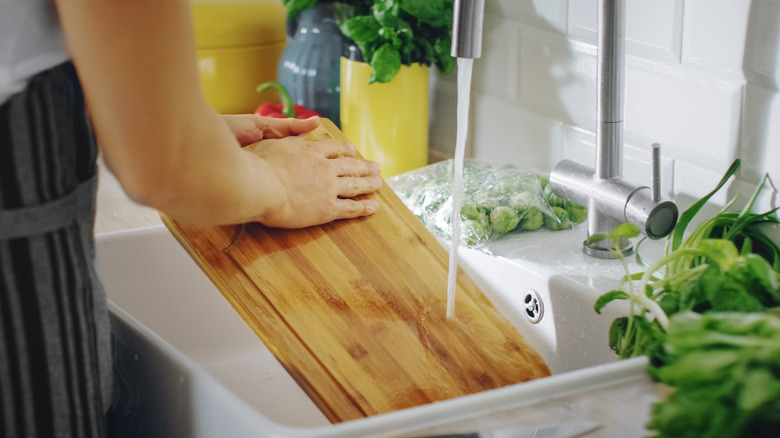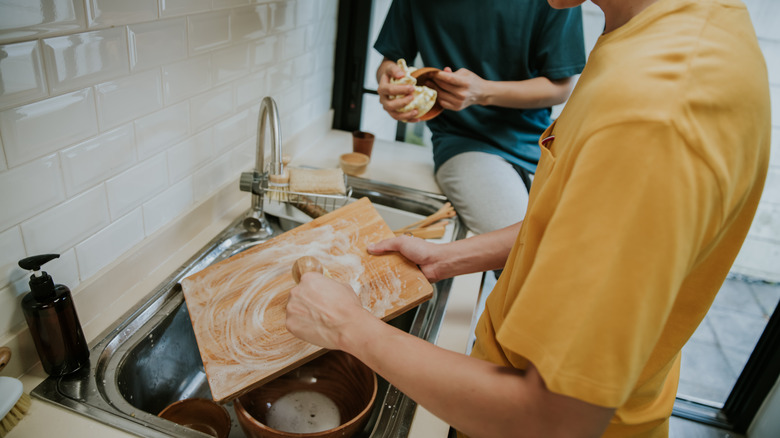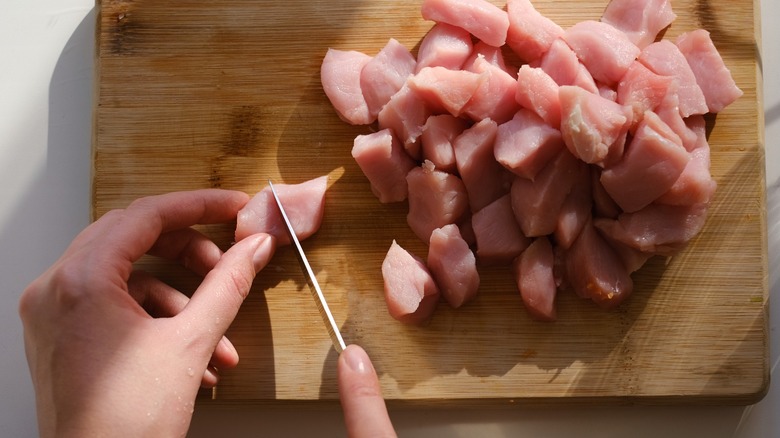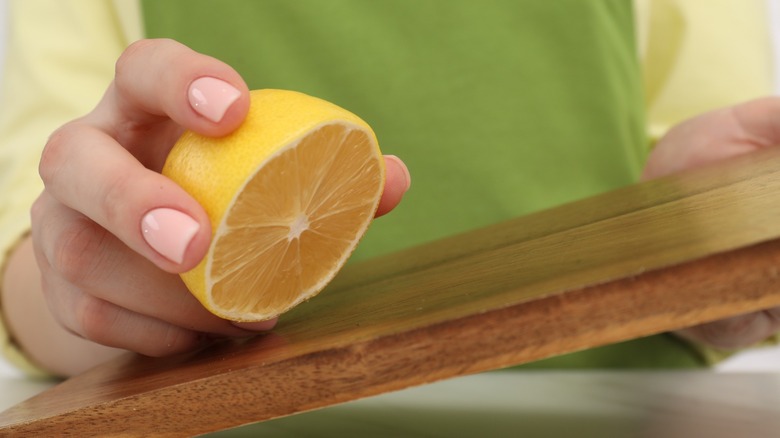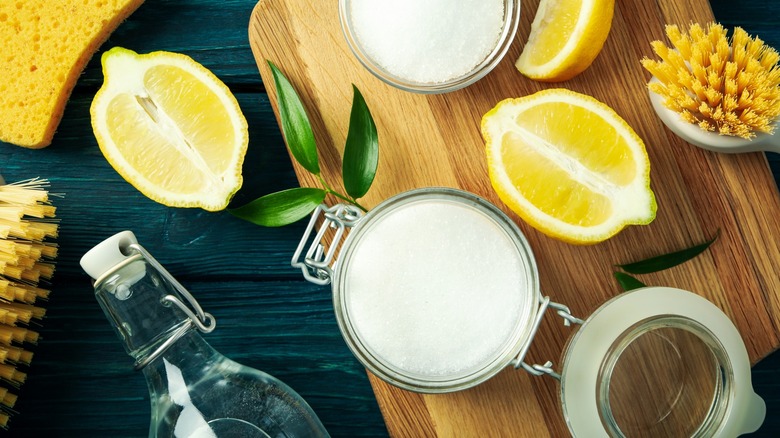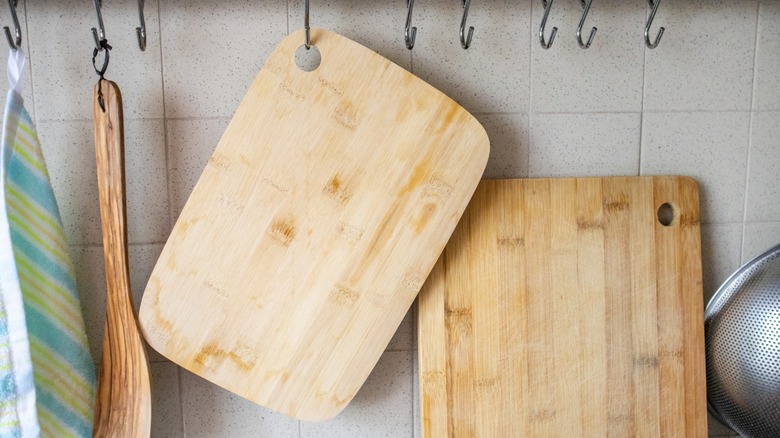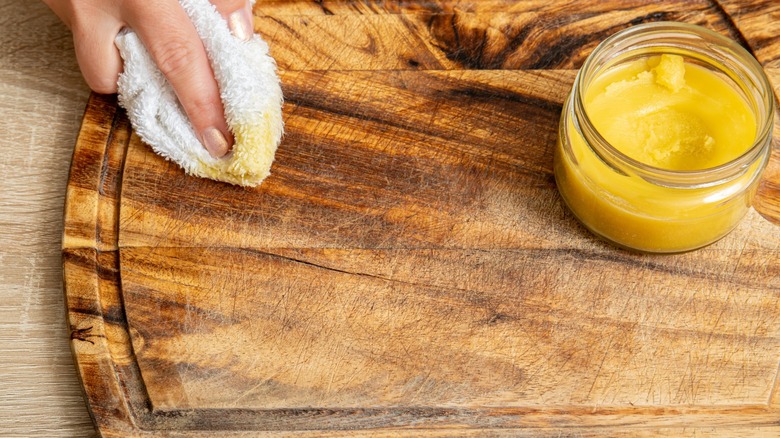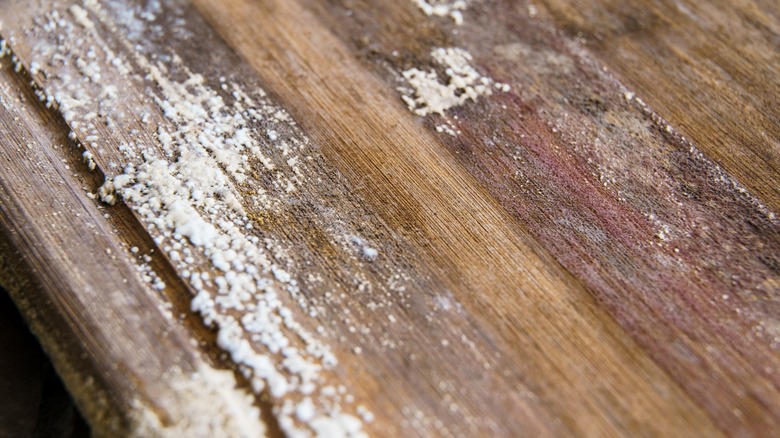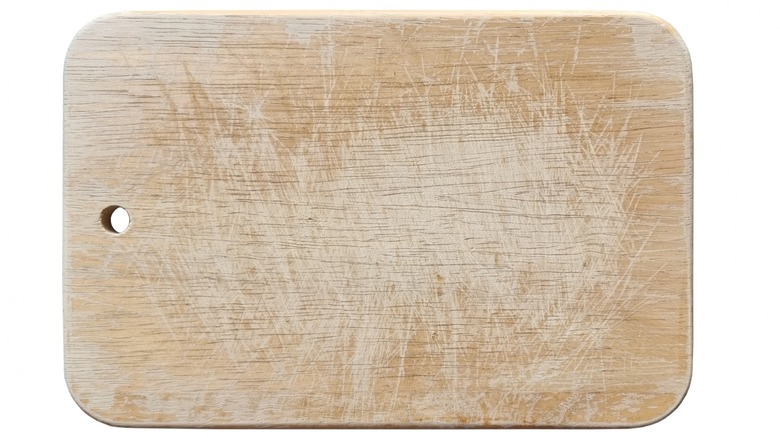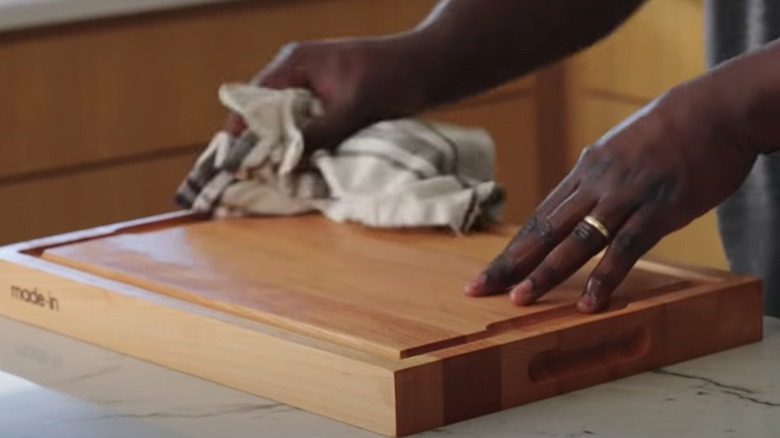9 Tips For Taking Care Of Your Cutting Boards And Keeping Them Clean
Cutting boards are a kitchen must-have, protecting your worktops while giving you a sturdy, sanitized area to chop fruit, vegetables, meat, fish, and any other ingredients for your recipes. Taking care of your wooden cutting boards and keeping them clean is essential, but there's a right and wrong way to go about it.
By taking care of your boards, you'll ensure they're always at their best and will last almost indefinitely. You'll also protect yourself and your family from any health risks from cross-contamination caused by bacteria lurking on your board. So how do you take care of your cutting boards?
From how to wash and sanitize them to seasoning them and storing them, there's a ton you can do to keep your boards at their best. We've rounded up nine tips to ensure that your boards remain in tip-top shape, ready for whatever recipes you're whipping up in your kitchen this weekend.
1. Hand wash your cutting boards regularly
You should wash your cutting boards regularly — but just how often is "regularly"? It's best to wash them after every use for the most part, and definitely ensure you're washing them with hot, soapy water after chopping raw meat or fish to prevent cross-contamination of other foods that could make you sick. You don't need to use harsh chemicals to wash your cutting boards as dish soap and warm water do just fine. It's also not recommended to use abrasive scourers which could damage the finish or the wood itself.
On that note, hand washing your boards is always better than throwing them in the dishwasher. The high temperature in there and the prolonged exposure to water can crack, warp, and damage your cutting boards. The heat of the dishwasher can also strip any protective finish from boards, encouraging bacteria to grow and making staining more likely.
2. Clean them immediately
You know you need to clean your cutting boards regularly, but leaving them to sit around after you've finished prepping food isn't a good move. It's always best to clean them straight away after cooking, especially if you've been chopping raw meat such as chicken. Leaving your board on the side while you have dinner or finish cooking means the meat will become hard and dry, making it more difficult to clean.
Don't be tempted to throw your board in the sink to soak in hot, soapy water while you eat, either. Though this might sound like a good idea, wood is porous, and absorbing all that hot water can lead to your cutting board cracking, warping, or splitting. Just give it a quick scrub before you get on with preparing the rest of your ingredients — or before you sit down to enjoy the meal you've prepared.
3. Don't forget to sanitize them
You might think that cleaning your cutting boards is a one-step-and-done affair, but there's more to it than that. As well as regularly cleaning your board, you'll want to sanitize it too. That's a different thing altogether from cleaning, and you can use some household items that you probably already have to hand.
There are a few different items you can use to sanitize wooden chopping boards, from lemon and baking soda to white vinegar, and hydrogen peroxide to bleach. If you're keen to avoid chemicals, lemon is probably the best option as white vinegar can leave behind an unpleasant flavor on your board.
To sanitize your board with lemon and baking soda, just sprinkle some baking soda over the cutting board's surface, then cut a lemon in half and use the cut side to rub the baking soda into the wood. The acidity of the lemon will tackle germs on the surface of the board and can also lighten and brighten the wood. Don't forget to rinse under running water once you're done.
4. Deodorize your board to banish odors
If you've been chopping particularly odorous foods such as raw fish, onions, or garlic, it's worth taking the extra step to deodorize your cutting board, as smells can linger on the wood. To do this, you'll need distilled white vinegar or a lemon and some kosher salt. Before getting started, always do a patch test on your board to ensure this doesn't affect the wood type and finish.
If you're using lemon and salt, sprinkle the board generously with salt, cut your lemon in half, and rub the salt into the board with the cut side until you've created a thick paste. Leave this to dry, then, using a metal spatula, gently scrape it off before washing and drying your board. You could also use a mixture of 25% distilled vinegar and 75% water. Just spray your cutting board with this mixture and stand it upright to air-dry before storing. With this method, you might notice a vinegary taste is left behind on the wood, though.
5. Always dry them and store them properly
Once you've finished washing, sanitizing, and deodorizing your boards, always dry them with a soft cloth or towel. You could leave them to air dry, but if you're doing this make sure they're upright and in a draining rack rather than sitting in a pool of water so they don't develop mildew or mold. Either way, don't put your cutting boards away until they're completely dry.
Ideally, you should store your boards upright to prevent moisture from building up on the underside. If you have a rack to hang them from, that's ideal. Otherwise, a nice dry cupboard is your best bet, as storing your board in a damp space could cause mildew growth, or could even result in your cutting boards splitting or warping. Make sure you season your boards regularly too as this will protect them in case of damp conditions — more on that coming up.
6. Season/oil them once a month — but don't use cooking oil
We touched on the importance of seasoning your wooden cutting boards, but what does that mean? Most wooden boards are sold bare to allow you to season them at home, and you'll want to do this every month or so. Seasoning just means using a protective wax or oil to keep moisture at bay and protect your board against warping or splitting.
Before you reach for that bottle of cooking oil to season your wooden cutting board with, stop right there! Cooking oil such as avocado, sunflower, coconut, or corn oil might seem like a logical choice — after all, it's already there in the kitchen and you know it's food safe — but it's not a good choice at all! These oils can turn rancid and cause rot or bacteria on the outside or inside of your cutting board.
So what's the best way to season your board? Use food-grade beeswax or mineral oil for the best results. Apply this to the board with a soft cloth, rub it in, then leave it on its side for 24 hours. Your board will be protected and as a bonus will look nice and shiny, too.
7. Don't ignore mildew or mold
If you see small black spots forming in clusters around the edges of your wooden cutting board, that's a sign of mildew. If your board has moisture trapped under it or is stored in damp conditions, you might even see green or white/grey mold forming on the wood. Sadly, if this happens, it's probably time to part with your cutting board and invest in a new one.
Mildew and mold are most often caused by not drying your board properly before putting it away, standing it up to dry — for example, in a pool of water — or storing it somewhere damp. You could sand off the mold or mildew by yourself, then refinish the board with your choice of mineral oil or beeswax to protect it in future. However, you need to ensure you're sanding deep enough to be certain the mildew or mold won't come back. You could ask a professional woodworker to do this for you, but it might be easier to just get a new cutting board.
8. Repair any defects promptly
When you take proper care of them, wooden cutting boards can last a long time. However, when your board develops defects such as splits, deep scratches, or cracks, you'll need to address them promptly to prevent the damage from becoming worse. Bacteria from raw food such as meat and fish could get into any deep grooves on your board, growing and causing cross-contamination, while cracks in your board could lead to splitting and warping.
You only need a few basic tools to repair your boards at home yourself, such as sandpaper to sand away deep scratches for a smooth surface, wood glue to repair splits and cracks, and mineral oil to protect and finish your board. If you're not confident fixing your cutting board yourself at home, a professional woodworker should be able to help. If you haven't taken good care of your cutting board and it's damaged beyond repair, it might be time to bite the bullet and wave bye-bye to it — just remember to take better care of your new one.
9. Don't use a wet board face down
This tip might sound like an obvious one, but some people wash one side of the board — for example, if they've been chopping meat — then place that wet side face down on the counter and continue chopping on the unused side. Don't ever do this, please!
The water pooling underneath the board is seriously bad news for the wood, and could cause warping or splitting, even if you're only leaving it that way for 30 to 45 minutes or so. Not to mention, washing just one side of the board is bad as the absorbed water could cause uneven expansion if you don't wash the other side at the same time. Either wash the board entirely then dry it with a clean, soft towel before you carry on chopping, or wait until you've finished prepping all your ingredients to wash it and dry it.
